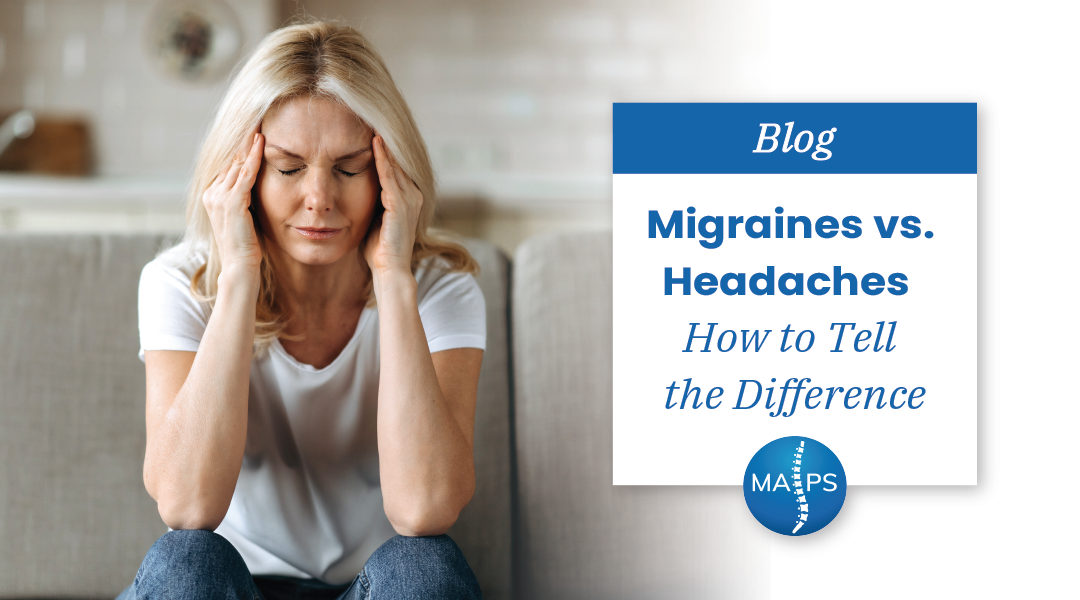Migraines vs. Headaches – How to Tell the Difference


Headache 101
Headaches are one of the most common pain conditions worldwide, and for one reason or another, at least 75% of people have experienced one in the last year. Headaches reflect pain experienced in the face, head, or upper neck areas, and can vary in their intensity and frequency. The condition is also differentiated as “primary” types, meaning the headache doesn’t have an underlying cause, and “secondary” types, meaning that another condition, like infection, high blood pressure, or trauma are contributing. Migraines are considered primary headaches, as research has yet to confirm the exact reason people get them.
Headache Pain Relief
There are a number of factors that can contribute to headaches, including hunger, jaw clenching, lack of sleep, poor posture, and even stress, so attempts to balance these issues can be helpful in both prevention and treatment. The most effective treatment ideas will be specific depending on your diagnosis and the symptoms you’re having, but following are helpful tips for headache management and pain relief:
- Many headaches can be prevented and treated by ensuring you are eating regular meals and drinking enough water, as hunger and dehydration can impact blood sugar levels in the brain.
- Keep a journal to recognize food triggers; some chemicals like MSG and caffeine or additives like preservatives and dyes can contribute to headaches in those that have food sensitivities.
- Mild headaches are typically well managed with over-the-counter medications like aspirin, ibuprofen and acetaminophen.
- Ice packs applied to the base of the head or neck can dull the sensation of pain.
- “Nose oils” dropped into the nostrils can help soothe headaches caused by stuffy or dry sinuses.
Migraines are Not Headaches
While many people think that migraines are just “really bad headaches,” they’re actually neurological illnesses of which severe headaches are a major symptom. Pain can be intense, and can include pounding, stabbing, or pulsing pain on one or both sides of the head, neck, or face. In addition to an array of other physical and mental disturbances, any kind of activity can make the symptoms and pain worse, so sufferers are typically limited to bed rest in dark, quiet spaces for anywhere from 4 to 72 hours if they’re without treatment.
Migraines are Not Headaches
As with headaches, an important aspect of migraine pain relief is prevention. If possible, keep track of migraine symptoms to talk about with your MAPS double-board certified physician, who will review to help you spot triggers and indicators like auras and other disturbances in vision, hearing, and sensation. In addition to the ideas for headache pain relief, MAPS can offer additional options for effective, responsible pain management:
- Responsible medication management, for continued pain relief without fear of dependency
- Botox injections which can block nerves from communicating pain signals to the brain
- Comprehensive treatment plans, including collaboration with primary physicians and physical therapists, mindfulness for stress management and more to carefully manage your complex condition
When It’s More Than a Headache, Call MAPS
If you’re a chronic migraine sufferer, you know how overwhelming and debilitating the condition can be, and with the MAPS dedicated to your responsible pain relief, hope is on your side. With a number of advanced treatment options and proven results, we will do everything we can to help you get back to the lifestyle you deserve. Call us today to learn more about how we can help.

